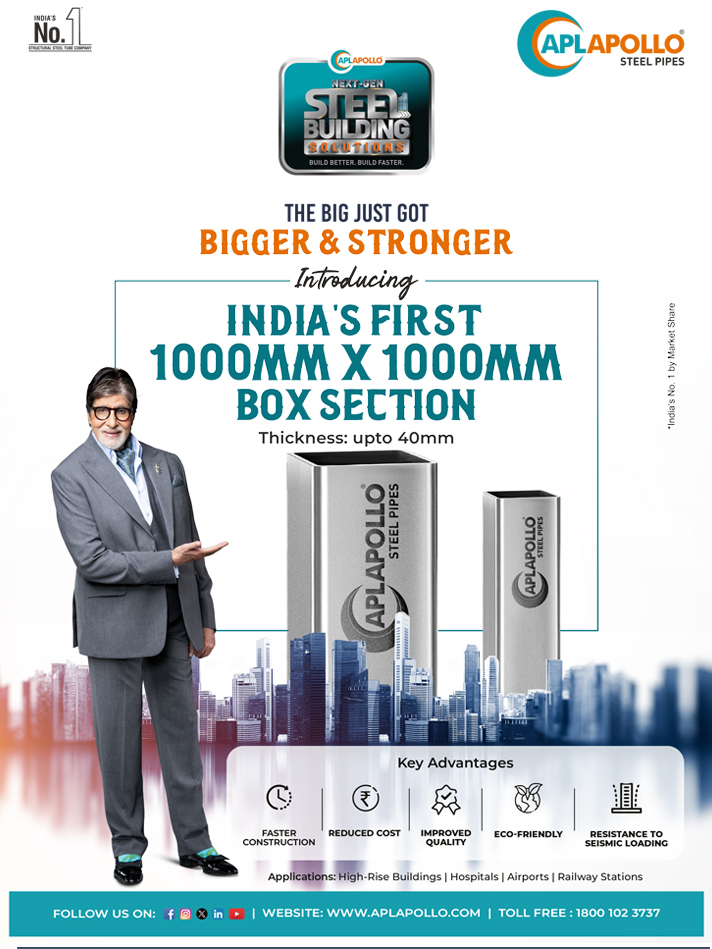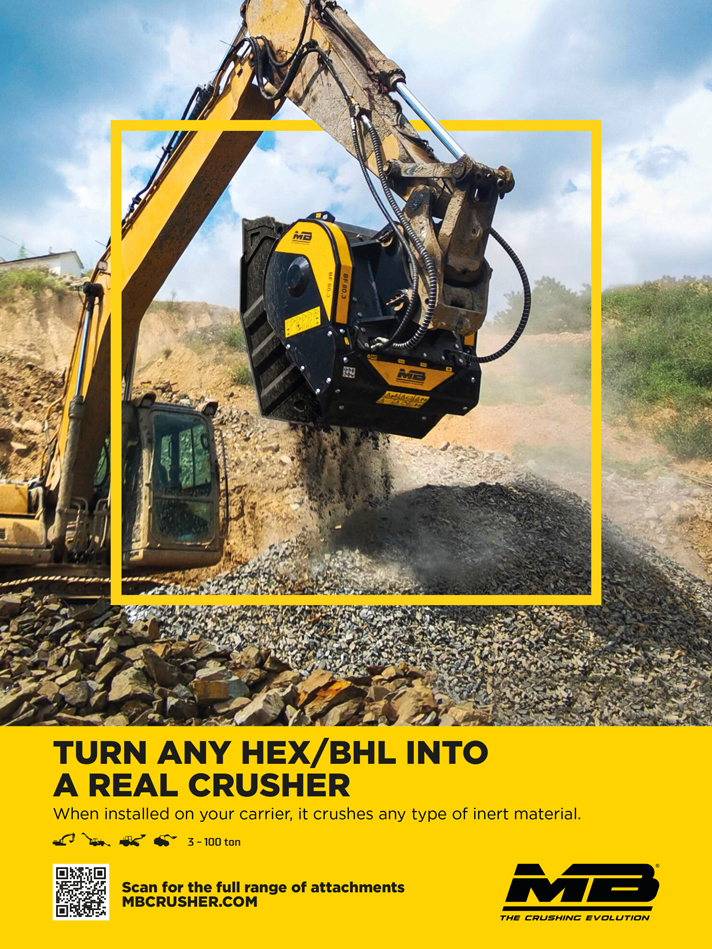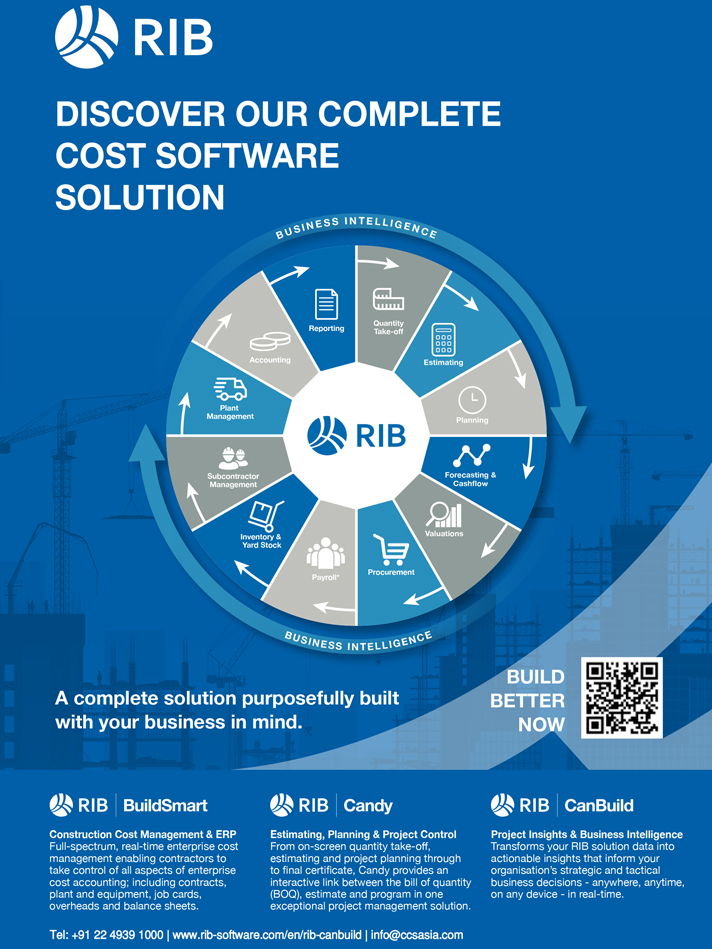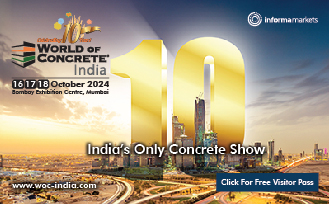
Precast Concrete & Equipment – Imparting Strength & Longevity
Owing to its inherent properties including preparing, casting, and curing concrete using a reusable mold in a controlled environment, precast concrete is more economical and practical in nature as compared to in-situ concrete and offers easy installation, transportation, and modification. It also offers dimensional accuracy and a choice of creating unique and breakthrough constructions of exceptional quality. The growth of the precast construction market depends on several factors, such as growing urbanization and industrialization, the need for reduced construction time and cost-effective products, and cities evolving into megacities….. writes, PRERNA SHARMA.
Building components precast concrete elements have become integral to modern construction due to their durability, safety, and cost-effectiveness, as mentioned in Technavio report. First, wall panels are a common precast concrete product widely used in the construction industry. These panels are available in off-the-shelf sizes for easy installation, reducing construction time and costs. This wall panel is ideal for the construction of large buildings such as offices, high-rise condominiums, and commercial facilities. They provide excellent sound and thermal insulation and are available in a variety of textures and finishes. Second, precast concrete beams and columns are important components in the construction of buildings that require structural strength. These components can be prefabricated in a variety of shapes and sizes, making them suitable for a variety of architectural designs. Beams and columns are known to withstand extreme weather conditions and have a longer service life than traditional building materials.
Third, stairs and elevator shafts are other important precast concrete elements in construction. These components are prefabricated off-site, reducing construction time and enabling a faster installation process. The materials used to manufacture stairs and elevator shafts are widely used in high-rise buildings as they are known for their strength and durability. Fourth, precast concrete panels are versatile and inexpensive structural elements that are widely used in the construction industry. These panels are prefabricated in various shapes and sizes and are suitable for flooring, roofing, and wall systems.
Finally, precast concrete foundations are a staple in the construction industry as they provide a stronger and more stable foundation than traditional foundations. These foundations are prefabricated offsite and can be installed quickly on-site, reducing construction time and costs. Hence, the factors mentioned above are expected to drive the growth of the building components segment of the market in the future.
The report further highlighted that the precast concrete offers high levels of durability, strength, and weather-withstanding ability, making it ideal for use in non-residential buildings that require a long service life and can withstand frequent use and frequent environmental exposures. The use of precast concrete in non-residential construction also offers a variety of design options, including custom shapes, colors, and finishes that can be tailored to the client’s specific needs and preferences. Whether it’s a modern office building or an industrial hall, precast concrete elements can be used to create functional and aesthetic designs that meet the architectural needs of your project. Additionally, non-residential construction projects often require large amounts of building materials, making precast concrete a cost-effective solution. Manufacturers can produce precast concrete bulk and ship it to the site as needed, reducing transportation costs and minimizing waste. Therefore, the above factors are expected to drive the growth of the non-residential segment of the market.
Imarc research also echoed the same sentiments stating that the increasing demand for precast concrete, as it is versatile and helps build affordable projects, represents one of the primary factors influencing the market positively. Besides this, the rising construction of various residential and commercial buildings across the globe is propelling the growth of the market. In addition, the growing utilization of precast concrete in building stadiums, bridges, and buildings, as it can be reused and recycled, is offering a favorable market outlook.
Apart from this, the rising adoption of precast concrete as an alternative to conventional concrete to minimize carbon emissions is contributing to the growth of the market. Additionally, governing authorities of various countries are investing in the renovation and reconstruction of various public buildings and heritage sites, encouraging the utilization of precast concrete to fasten the construction process and minimize the cost of raw materials and labor. Moreover, the rising automation of the manufacturing process of precast concrete to increase production and maintain consistency is strengthening the market growth. Furthermore, key market players are building numerous precast concrete centers and fabrication yards in prominent cities to deliver cost-effective solutions while meeting tight deadlines.
Capturing Growth Expanse
The structural building components segment is expected to be the fastest-growing category, growing at a CAGR of 5.9% in the future. This growth can be attributed to the high demand from the construction industry. The increasing number of hotels, malls, and hospitals and growing industrialization globally will likely propel the product segment growth over the forecast period. The rising use of structural building components in affordable housing is anticipated to be a major driver for this segment. The rising demand for affordable housing due to the rapidly growing middle-income population is expected to drive product demand.
Precast concrete walls offer design flexibility and improve profitability, this key attribute is projected to propel the demand for precast architectural building components over the forecast period. The expansion of cities will likely result in an increasing number of office buildings, hospitals, schools, shopping centers, apartments, and parking garages. Precast concrete is expected to gain high demand in rail applications owing to the rising awareness about its benefits, such as high durability, low maintenance cost, and improved track elasticity. In addition, improved ride quality, minimum lifecycle cost, improved geometric retention of the rail track, and greater weight, which is essential for heavy freight lines and high speed, and environmental friendliness are likely to benefit the industry further.
Significant investments in infrastructure and real estate development offer lucrative precast concrete growth opportunities. The emphasis on infrastructure and residential needs, particularly in emerging nations, has resulted in a considerable flow of private and government-led investments in these sectors. The precast concrete structures are cast and cured offsite and delivered when required. Thus, they do not need on-site storage space. Moreover, it requires few laborers, and the installation requires small cranes. Thus, the aforementioned benefits of the product in residential applications are projected to propel the segment growth over the forecast period. Precast concrete is among the most popular construction materials for building office structures.
The precast walls used in the commercial building are manufactured off-site, which helps in saving time and space. In addition, the speed and ease of building precast structures promote its application in parking structures. Precast concrete structures are suitable for constructing noise-cancellation walls as their surface is designed to minimize ambient noise caused due to highway traffic or trains. In addition, the design flexibility offered by concrete makes it apt for outdoor applications involving climbing walls, skate parks, and fences. Moreover, infrastructure development programs in emerging economies will likely increase product demand. The construction of dams, bridges, flyovers, and other public utility structures is anticipated to accelerate the product demand.
Talking about the region-specific growth, Asia Pacific is anticipated to be the fastest-growing regional market, with a CAGR of 6.6%. The outstanding economic performance of the region is expected to nurture growth. Stringent regulations that limit the emission of CO2 gas are likely to push the product demand, which causes less pollution. Furthermore, the demand for the product is expected to grow rapidly due to the inclination of building contractors and customers towards eco-friendly, cost-effective, and modern construction solutions.
Looking at the buoyant market opportunities, Grand View Research predicts the global precast concrete market size to register a CAGR of 5.5% in the near future, which was estimated at US$96.3 billion in 2021. These products can have a significantly high span-to-depth ratio, which helps the structure in better load bearing, thereby reducing the need for additional columns. Thus, these products are widely used in large-scale projects like concert halls and arenas so that any pillar does not block the view and experience of the audience. Prominent industry participants are involved in technological innovations to develop new products to consolidate their industry presence. A rise in consumer demand and a shift in consumer preference toward high-quality products are also projected to open up several growth avenues for new entrants in the industry.
Fast Facts
- Precast Concrete market growth will increase by $19.61 billion during 2023-2027.
- Modular precast has proven itself one of the fastest, most profitable, sustainable, and cost-effective ways to build.
- In an average project of a multi-storey building, one floor can be erected as fast as within one week. The cost of precast construction is slightly higher than cast-in-situ because it requires manufacturing, logistics and crane work, but when integrating shorter building time into costs, the precast is cheaper.
- It provides the advantage of planning for future construction projects as the construction components can be rearranged effortlessly.
- It also eliminates clutter and unnecessary materials that overcrowd the construction site and does not require the involvement of numerous laborers, as precast concrete requires lifting and installation on the site.
- As precast concrete can be produced in large quantities throughout the year, its demand is increasing around the world.














